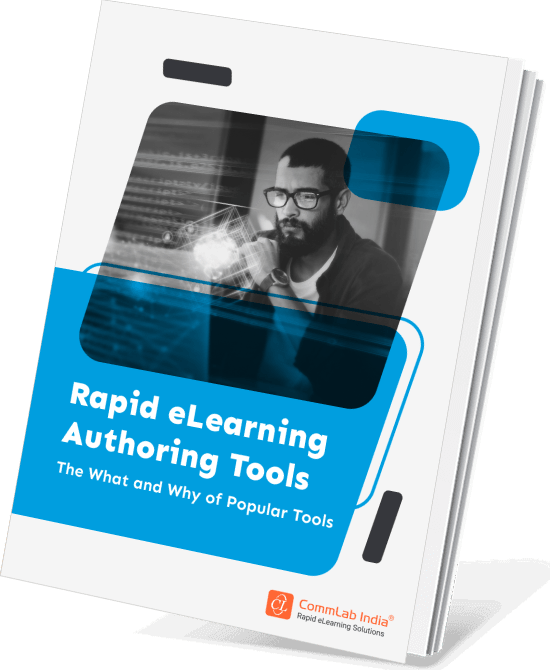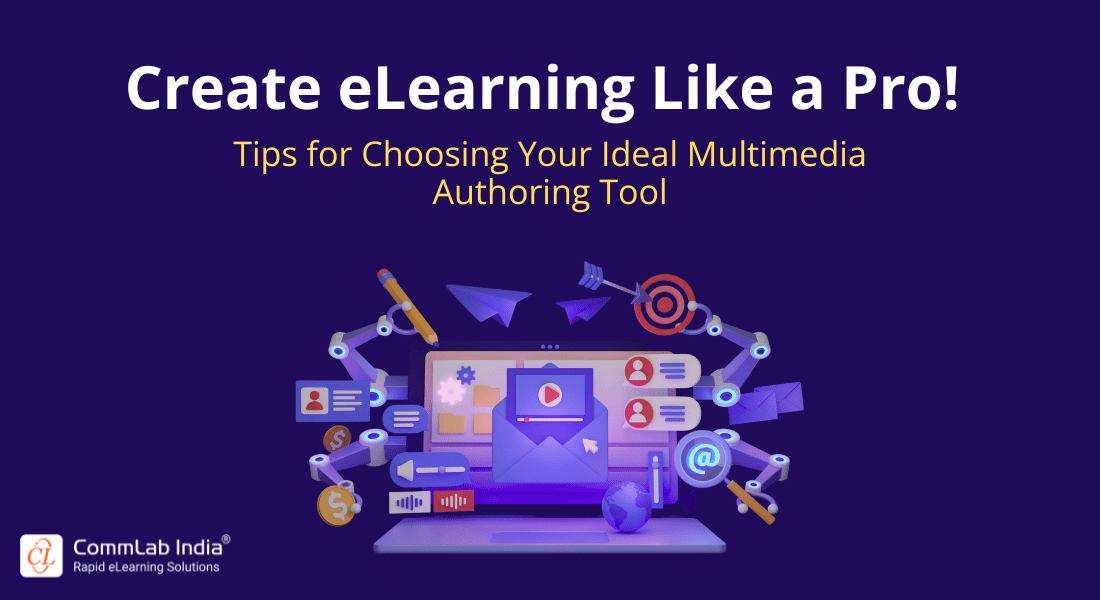5 Must-Know Questions About eLearning Authoring Tools (Answered!)

ELearning authoring tools are like magic wands for busy L&D professionals. No coding skills needed! These user-friendly software programs come with pre-made templates to simplify course creation and slash development time. But with hundreds of options, finding the perfect fit can be overwhelming. Fear not! Choosing the right tool depends on your needs. Some cater to beginners with drag-and-drop templates, while others empower experts with advanced customization options.
The wrong choice can waste time, money, and leave you with subpar courses. So, let's dive into the top 5 questions about eLearning authoring tools to help you find your ideal match!
→ Download eBook: How to Select the Right Rapid eLearning Authoring Tool
Table of Contents
What You Need to Know About eLearning Authoring Tools: 5 Key FAQs Answered
- What are the Various Types of Authoring Tools?
- Which Rapid eLearning Authoring Tool is the Most User-Friendly?
- Which eLearning Authoring Tool is the Easiest to Learn?
- Which eLearning Authoring Tool is Best for Creating an eLearning Course Based on Simulations?
- What Is the Best Tool for Creating Interactive eBooks From My Online Training Materials?
What You Need to Know About eLearning Authoring Tools: 5 Key FAQs Answered
1. What are the Various Types of Authoring Tools?
Every eLearning authoring tool is different, and each has its unique set of capabilities. Depending on how eLearning professionals maintain and display their courses, authoring tools can be classified as desktop-based or cloud-based.
- Desktop-Based: In order to use these online training development programs, you must first install them on your computer. They are stand-alone solutions with several features that aid developers in creating compelling and interactive courses.
Example: Lectora Inspire, Articulate Storyline - Cloud-Based: Logging into a web browser allows you to use cloud-based applications from anywhere, at any time, and on a variety of devices. These programs are more user-friendly and have excellent user interfaces, and also allow distant teams to work together on projects.
Example: Easy Generator, Lectora online
Wondering How to Select the Right Authoring Tool?
Here are the top 2 FAQs About Authoring Tools to Help you Choose the Ideal Fit:
- What are the Various Types of Authoring Tools?
- Which Rapid Authoring Tool is the Most User-Friendly?
Continue reading to learn more…
2. Which Rapid eLearning Authoring Tool is the Most User-Friendly?
The learning curve, its availability of pre-built assets and other features related to course needs, and other variables all influence how user-friendly an authoring tool is. Overall, the most significant aspect in determining whether or not an authoring tool is user-friendly is, of course, its simplicity of use.
Articulate 360 (Storyline 360 & Rise 360), Trivantis Lectora, and Adobe Captivate are the most user-friendly authoring tools based on the ease of use:
- Articulate 360 has a flat learning curve, whereas Lectora and Captivate have somewhat steeper learning curves.
- Lectora is the most user-friendly tool for creating completely responsive or adaptable courses that are mobile-compatible.
- Rise 360 is a cloud-based application that allows for rapid creation. and is completely responsive.
- Captivate is ideal for courses using complicated software simulations.

3. Which eLearning Authoring Tool is the Easiest to Learn?
Articulate Storyline 360 offers a simple to moderate learning curve, making it the most user-friendly authoring tool. This is because it:
- Is Similar to the PowerPoint interface but has more customization options
- Provides solutions for the majority of eLearning needs
- Is Simple to use for developers of all skill levels

Rapid eLearning Authoring Tools
Explore the What and the Why of Popular Rapid eLearning Development Tools, and GenAI Tools
- Categories of eLearning Authoring Tools
- Considerations to Choose Your Next Authoring Tool
- Features of Popular Rapid Authoring Tools
- GenAI Tools to Create Content, Graphics, Audio, and Video
4. Which eLearning Authoring Tool is Best for Creating an eLearning Course Based on Simulations?
The combination of Adobe Captivate with simulation-based eLearning is a marriage made in heaven. It’s never been easier to create complicated watch-try-do software simulations! Adobe Captivate 19:
- Offers 4K HD resolution output
- Allows for the capture of high-resolution screencasts of any screen activity
- Allows for the conversion of screencasts into videos and the addition/deletion of callouts
Even though Storyline may be used for simulation-based eLearning, it does not support 4K HD resolution output.

5. What Is the Best Tool for Creating Interactive eBooks From My Online Training Materials?
Adobe InDesign is the tool to use if you want to swiftly generate eBooks or convert your existing corporate training into eBooks:
- Adobe InDesign allows you to create eBooks in a variety of formats, including interactive PDFs and EPUBS
- Interactive PDFs may be viewed on smartphones, tablets, eReaders, laptops, and PCs and include interactive elements
- EPUBs are used to sell eBooks on popular online retailers such as Google Play and Amazon Kindle Store.
How Do You Find the Ideal eLearning Authoring Tool for You? [Video]
Parting Thoughts!
It is critical to understand authoring tools before embarking on the road of eLearning development and design. I hope that this article has addressed a few of your questions about authoring tools and provided some insight into how they might assist you in creating excellent courses.
Are you still confused about how to go with analyzing your alternatives and choosing the best authoring tool for your training courses? So, don’t be concerned. Download our free eBook on ‘How to Select the Right Rapid eLearning Authoring Tool’ and discover practical insights and more.
Editor's note: This post was originally published on June 28, 2022 and has been updated for comprehensiveness.





